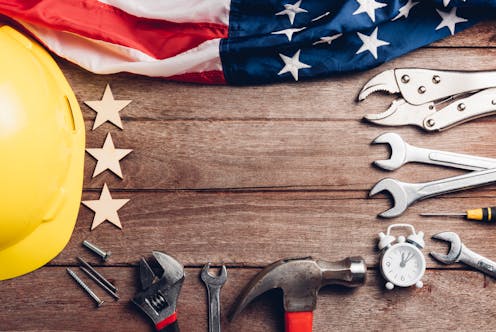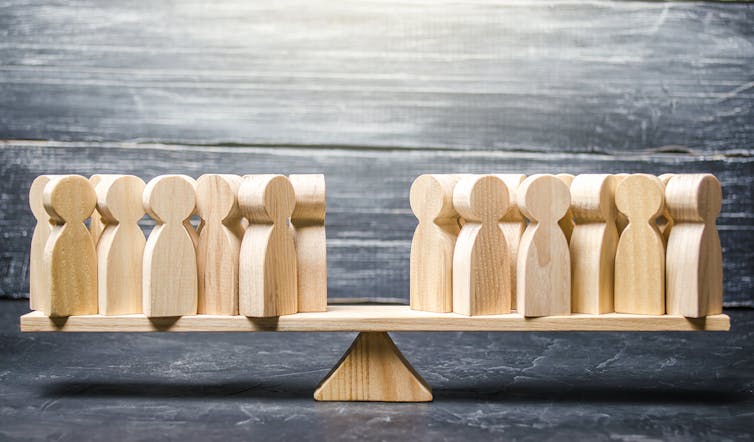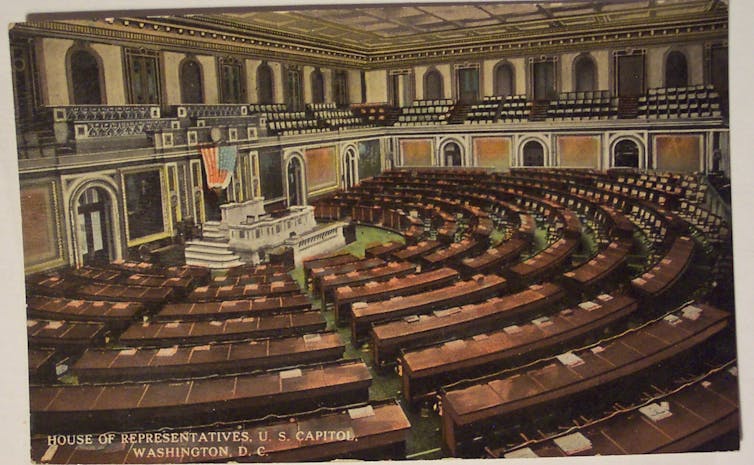Americans agree politics is broken − here are 5 ideas for fixing key problems
Surveys show Americans do not believe the political system is serving them. A mathematician of democracy highlights evidence-based changes that could improve matters without tearing the nation apart.

Now that the elections are over, you might be left feeling exhausted, despondent and disillusioned – whether your preferred candidate won or not. You are not alone.
Survey after survey has found that Americans agree that the political system is not serving them.
Americans say they are angry at the political dysfunction, disgusted with the divisive rhetoric, weary from the lack of options, and feel unheard and unrepresented. I am a mathematician who studies quantitative aspects of democracy, and in my view, the reason for this widespread dissatisfaction is evident: The mechanisms of American democracy are broken at a fundamental level.
Research shows that there are clear mathematical fixes for these malfunctions that would implement sound democratic practices supported by evidence. They won’t solve every ailment of American democracy: For example, Altering Supreme Court rulings or expanding voting access are more political or administrative than they are based in math. Nevertheless, each of these changes – especially in combination with one another – could make American democracy more responsive to its citizens.
Problem: Plurality voting
Plurality voting, or the winner-take-all method, is how all but a handful of the nation’s 520,000 elected officials are chosen. It is also mathematically the worst, because it can give victory to a candidate who does not have majority support. This method is rife with mathematical problems, such as vote-splitting and the spoiler effect, which both deliver victory to less popular candidates.
Solution: Ranked-choice voting
Ranked-choice voting allows voters to put their preferences in order, rather than just registering their top selection.
This system, used in Australia, New Zealand and elsewhere around the world, as well is in over 50 jurisdictions in the U.S., including Alaska, New York City and Minneapolis, elects a candidate that has broad support. Because voters are not worried about wasting their votes, this method allows people to show support for third-party candidates even if they don’t win. This method also punishes negative campaigning because candidates can win even if they are some voters’ second or third choices, not just their first choice.

Problem: Electoral College
The Electoral College is a unique and uniquely archaic mechanism that no other country in the world wants anything to do with. Its legacy of slavery and the Constitution’s framers’ skepticism about the populace being smart enough to make good decisions for themselves is only exacerbated by its many mathematical problems, which give some states’ voters more power than others when electing a president.
Solution: Popular vote
The evidence shows that switching to a popular vote would eliminate those biases. But even if 63% of Americans support getting rid of the Electoral College, history shows that the constitutional amendment required is not likely to happen.
A way to avoid a need for a constitutional change could be the National Popular Vote Interstate Compact, currently supported by 17 states, including California and Illinois, and Washington, D.C. It would require the electors from the states in the compact to vote for the winner of the national popular vote. But it does not take effect until enough states join that their combined electoral votes reach the winning threshold of 270. Right now, states with a total of 209 electoral votes back the measure.
Problem: Single-winner districts
Because of winner-take-all voting, congressional and state officeholders don’t necessarily reflect the district’s partisan makeup, giving disproportionate representation to one party.
Solution: Multi-winner districts
Most democracies around the world have geographically larger districts that elect multiple candidates at the same time. Multi-winner districts are designed to achieve proportional representation. Right now, all nine Massachusetts representatives in the U.S. House are Democrats, even though one-third of the state’s voters typically opt for Republican candidates. But if Massachusetts had three congressional districts instead of nine, and each elected three House members, one-third of the seats would go to Republicans, commensurate with the proportion of the state’s Republican voters. Multi-winner districts also effectively eliminate gerrymandering.
Problem: Party primaries
About 10% of eligible voters cast ballots in congressional primaries. Those voters often represent a fired-up base that can elevate fringe or extreme candidates who go on to run in general races that are often not competitive due to a confluence of factors such as plurality voting and single-winner districts.
The final figures are not yet available for 2024, but this one-tenth fraction of voters effectively decided 83% of congressional seats in 2020. Representatives mold their politics to pander to the demands of that base and can keep their jobs for decades with little effort.
Presidential primaries have their own mathematical flaws that distort the preferences of the voters and reward polarizing candidates who can turn out the base.
Solution: Open primaries, or none at all
A system of open, nonpartisan primaries is employed in California, Colorado and Nevada. Three or four top candidates advance to the general election, which is then conducted using ranked-choice voting. This structure increases voter participation and delivers more representative outcomes.
A simpler solution could be to eliminate primary elections and hold a single, open general election with ranked-choice voting.

Problem: Size of the House of Representatives
The very first amendment the framers of the Constitution proposed was one that would have required the size of the House of Representatives to grow as the nation’s population increased. For close contact between officeholders and constituents, they liked a ratio of 30,000 to 50,000 people per House member. Their amendment was never ratified.
The ratio today is 760,000 people per representative. The size of the House is set by law and has been fixed at 435 members since 1913. It is hard to imagine that a representative can speak knowledgeably about so many constituents or understand their collective needs and preferences.
Solution: Make it bigger
To reduce the ratio, the House would need to be bigger. With a national population over 337 million, James Madison’s preference would require more than 6,700 House members. That’s unwieldy. Most democracies either intentionally follow or seem to have naturally settled on a different formula, in which the size of the legislature is about equal to the cube root of the country’s population.
For the U.S., that number is currently nearly 700, which would put the population-to-representative ratio at 475,000-to-1. This would still upset Madison, but it’s considerably more representative than the current state of affairs.
Could the Capitol handle such an expansion? Architectural studies show that won’t be a problem.
Ismar Volić does not work for, consult, own shares in or receive funding from any company or organization that would benefit from this article, and has disclosed no relevant affiliations beyond their academic appointment.
Read These Next
From record warming to rusting rivers, 2025 Arctic Report Card shows a region transforming faster th
The 20th anniversary of the annual report tracks how sea ice, snow cover and many other vital signs…
2 superpowers, 1 playbook: Why Chinese and US bureaucrats think and act alike
The men and women tasked with implementing policy are governed by the same incentives and constraints…
How rogue nations are capitalizing on gaps in crypto regulation to finance weapons programs
North Korea was behind a $1.5 billion digital bank heist in February 2025. Other countries are similarly…





